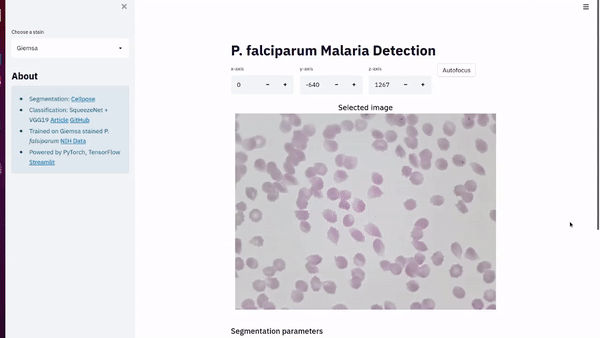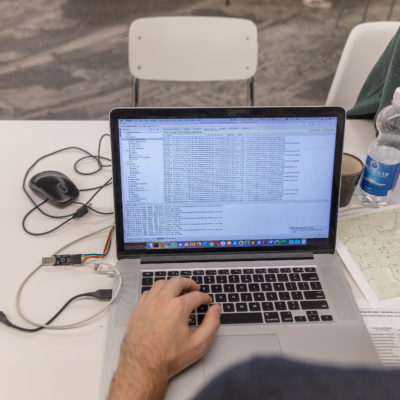
Deep learning to diagnose malaria – Graduates develop the Malatec app
A quick and inexpensive malaria diagnosis via an app should be possible! This is what our three recent Graduates of the Master’s programme “Applied Information and Data Science” say to each other. Therefore and for this purpose they have decided to develop the Malatec smartphone application. The diagnosis is to be made by using an inexpensive, 3D-printed microscope (under 5 CHF), which will be developed for this purpose.

As a mosquito-borne infectious disease found mostly in the southern hemisphere, Malaria often causes high fever, or even death if it’s wrongly treated or left untreated. Pregnant women are especially vulnerable and have a higher risk of death. Children below the age of five are the hardest hit, accounting for around two-thirds of all deaths (World Health Organization WHO, 2019). The WHO estimates that around 228 million malaria cases occurred worldwide in 2018, 213 million (93%) of them on the African continent (WHO, 2019). The annual case numbers roughly match the combined population of the UK, Germany and France, resulting in a significant negative impact on the health of the affected population, economy and development of the affected regions. Malaria eradication: what we need to do:
Algorithm for detecting malaria directly

There are two methods for diagnosing a malaria infection. The first one uses a rapid test that can detect parasites through a chemical reaction with the blood. But it tells you only whether the person is infected; it doesn’t tell you anything about the stage of the infection. In the second method, a doctor takes a blood sample and either examines it under a microscope or sends it to a lab for a diagnosis. During the process, the malaria parasites (plasmodia) in the blood sample are dyed for better detection and then counted manually, a step that’s not only labor-intensive and error-prone but also requires educated and trained specialists who may be in short supply in some regions.
So, how could a malaria test work on a smartphone? Well, it also relies on dyed blood samples to detect plasmodia, the same as a lab. However, the parasites are not detected and counted by a person using a microscope but by an object-recognition algorithm that is based on a neural network.
A mobile malaria diagnosis that relies on algorithms has many advantages over conventional rapid malaria tests. Firstly, an app diagnosis makes it possibly to store patient data centrally and track outbreaks geographically. This means that local health facilities can prepare for an outbreak by stocking up with medicines, medical staff and materials. Secondly, an app-based malaria diagnosis is more accurate than a rapid test and delivers results faster than a lab. App-based malaria diagnosis can determine the exact number of parasites and pathogen types, information that then helps doctors to choose the right treatment.
The potential of this new method lies in how widely it can be used in the future. And here’s the best part: mobile microscope hardware plus the right algorithms can be designed to diagnose other illnesses as well, such as tropical diseases for which there are currently no rapid tests.
Developing a prototype and the next steps
In developing a Malatec prototype, the team relies on various partners who want to use data science for a good cause. The Master of Applied Information and Data Science program was able to support the Malatec team with the purchase of malaria blood samples that are needed for developing the prototype, and the Institute of Pathology at the Lucerne Cantonal Hospital has agreed to analyze them. The data from the analysis results serves as basis or “ground truth” of the algorithm. A search for partners to finance the prototype as well as for donors of a microscope is currently underway. Malatec’s ambitious goal is to develop a cost-effective, mobile and accurate malaria diagnosis system and then bring it to the African market.
We want to thank the Malatec team for sharing these interesting insights into their project! Have a look and discover Malatec`s professional portrait & interview
Interested? If you want to know more about this project, please contact the team at ai.malatec@gmail.com !
We want to thank the Malatec team for sharing these interesting insights into their project! Check out here as well the Malatec professional portrait and exciting interview.
Authors: Daniel Barco, Stephana Müller, Silvan Burnand & Benjamin Hohl
https://malatec.ch/ About Malatec: https://malatec.ch/about-us/
References: World Health Organization. (2019). World Malaria Report 2019. Retrieved on 21 September 2020 from https://www.who.int/publications/i/item/world-malaria-report-20
Contact us if you have any questions about the degree programme or for individual advice:
Tel.: +41 41 228 42 53 / E-mail: master.ids@hslu.ch
Data is the resource of the 21st century!
Register and join us for a free online Information-Event:
Friday, 28 November 2025 (Online, English)
Monday, 12 January 2026 (Online, English)
Monday, 09 February 2026 (Online, German)
MORE INFORMATION TO THE MASTER’S PROGRAMME HERE:
MORE FIELD REPORTS & EXPERIENCES: Professional portraits & study insights
PROGRAMME INFO: MSc in Applied Information and Data Science
DOWNLOAD BROCHURE: MSc in Applied Information and Data Science Brochure
CHECK OUT OUR: Generalist profile
FREQUENTLY ASKED QUESTIONS: FAQ
Contact us if you have any questions about the degree programme or for individual advice:
Tel.: +41 41 228 42 53 / E-mail: master.ids@hslu.ch





